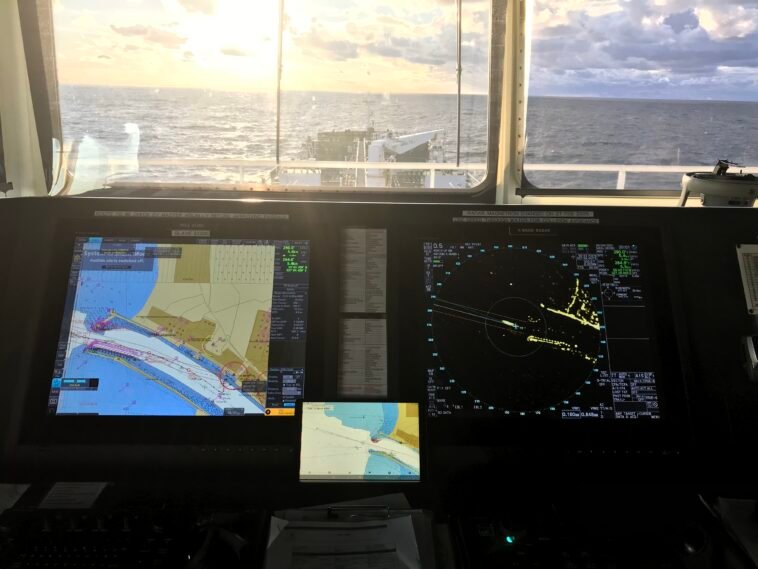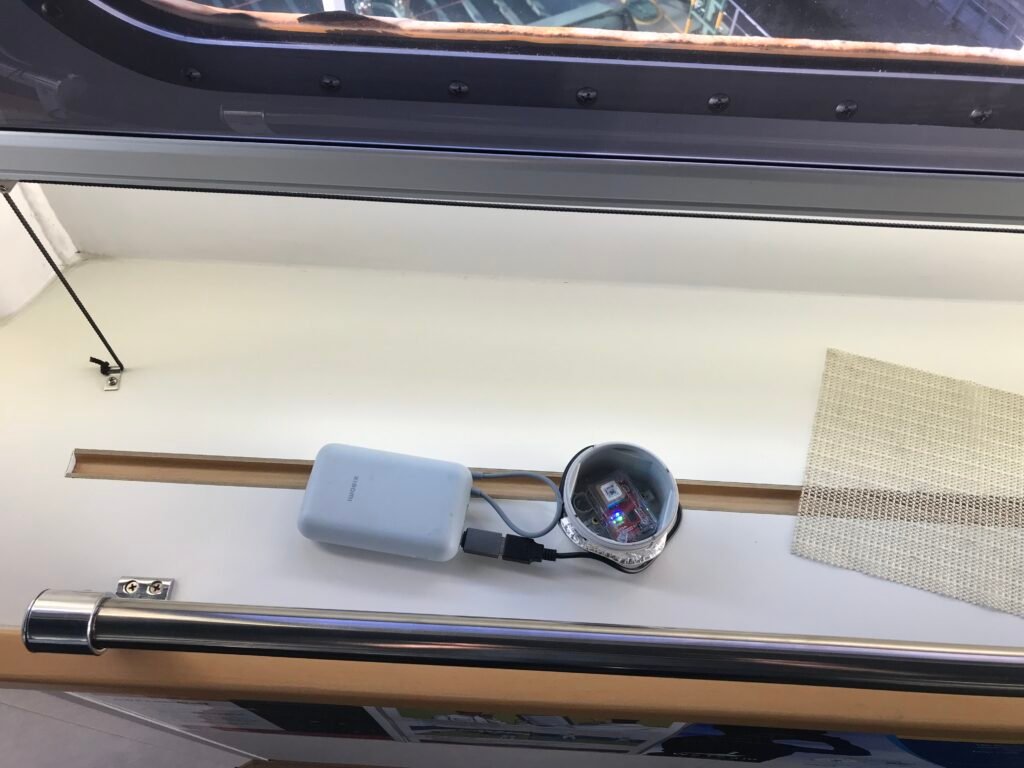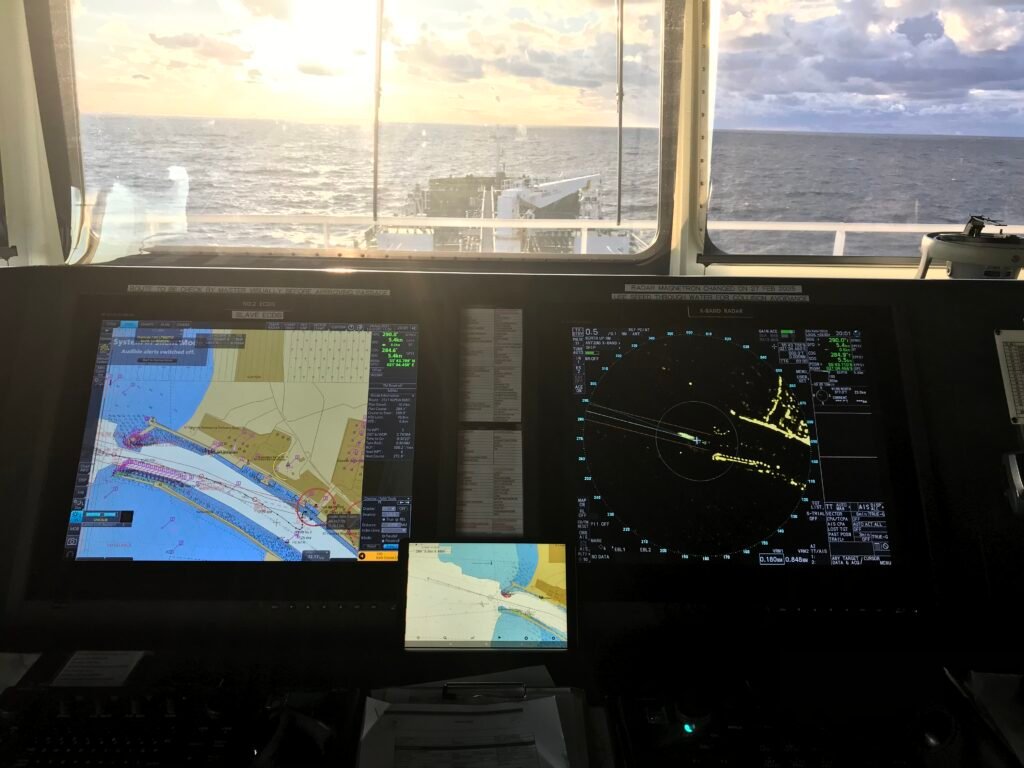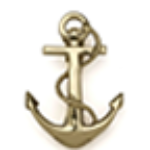Being a marine pilot for more than a decade, I never thought I would need to create a product like this. But over the past two years, during ship pilotage in Baltic sea port, GPS spoofing has become a serious issue. Sometimes nearly 80% of incoming vessels experience GPS problems — from unstable signals to total loss of GPS. This is a direct safety concern.
I started searching for solutions. Inspired by ChatGPT suggestions, I tested different external GPS receivers, shielding, and navigation apps. First I tried with devices like the Qstarz, but realized that 2-constellation GPS receiver (GPS and Glonass) is not anymore acceptable in modern navigation.
Then I tested RaceBox units. (25Hz GNSS Module Simultaneous tracking of GPS, Glonass, Galileo, Beidou, SBAS, QZSS) They worked better outdoors with shielding, but existing connector apps caused problems — apps like NV Charts froze, while SeaPilot showed “jumping” course and speed.
I contacted NV Charts and RaceBox support, but received no real solution. RaceBox didn’t want to adapt their app for marine navigation users. So with the help of ChatGPT and a developer, I created RaceBox Injector: a simple, affordable app that connects RaceBox devices to Android navigation apps, with an optional smoothing filter (3–5 seconds) to stabilize COG and SOG.
After 50+ hours of testing, I confirmed: NV Charts works smoothly with RaceBox, SeaPilot is stable with smoothing enabled, and the setup even rivals professional units. It’s not a final solution against spoofing, but it’s an important step.
During testing, RaceBox Injector proved that affordable consumer hardware can be adapted for reliable backup navigation. This inspired a new idea:
Imagine a compact, waterproof RaceBox (or similar 4-constellation GPS receiver) placed on deck, powered by a small battery, and streaming stable GPS data continuously to an Android phone via Bluetooth. With RaceBox Injector providing smoothing and injection, any navigation app (NV Charts, OpenCPN, Orca, SeaPilot, etc.) could instantly switch to this external GPS source whenever needed.
Such a setup could become a low-cost backup navigation system for small boats, yachts, and fishing vessels — offering more stability and resilience compared to relying solely on built-in smartphone GPS.
Please check entire “project” with Racebox Micro.
Parts:
Waterproof junction/mounting box
USB C cable. The color of the wires inside usually tells you what they do.
Here’s the standard breakdown you’ll typically see if you strip open a cable: Red → +5 V, Black → Ground (GND), Green → Data+ (D+),White → Data− (D−)
Power bank or a battery pack
DIY GPS
Some Characteristics:
25Hz GNSS Module Simultaneous tracking of GPS, Glonass, Galileo, Beidou, SBAS, QZSS
Equipped with the latest generation 25Hz GNSS receiver boasting precision as fine as 10cm (4 inches)
Bluetooth 5.2 Compatible with Android smartphones
3.5-16V voltage range 20mA recording, < 1mA standby consumption
High Precision Accelerometer +/- 8G range High Precision Gyroscope +/- 320dps range
Internal storage for over 2 hours of data at 25Hz (5 hours at 10Hz)
Start/stop standalone recording with a press of a button
In action…
GPS spoofing shield.
More details to come…..
Developer of RaceBox Injector application
Disclaimer
The information provided in this article about RaceBox and related devices is for informational and educational purposes only. RaceBox® is a registered trademark of its respective owner, and this publication is not affiliated with, sponsored by, or endorsed by RaceBox. All product names, logos, and brands mentioned are the property of their respective owners. Performance results, features, and user experiences described may vary depending on individual use cases, device settings, and environmental conditions. Readers are advised to verify details with the official manufacturer and use RaceBox devices in accordance with applicable laws, safety regulations, and the manufacturer’s instructions. The author assumes no responsibility for any loss, injury, or issues arising from the use or misuse of the products discussed.
Updated:
Remark:
RaceBox GPS units operate only on the L1 band (1575.42 MHz), which makes them more vulnerable to heavy spoofing, even when shielding is applied. Shielding can reduce interference but cannot eliminate strong spoofing attacks.
We are already working on an improved solution that will combine multi-frequency GPS reception with advanced spoofing protection, and we will present it shortly.








